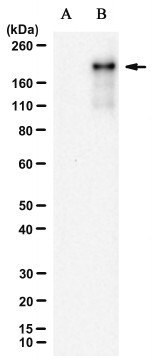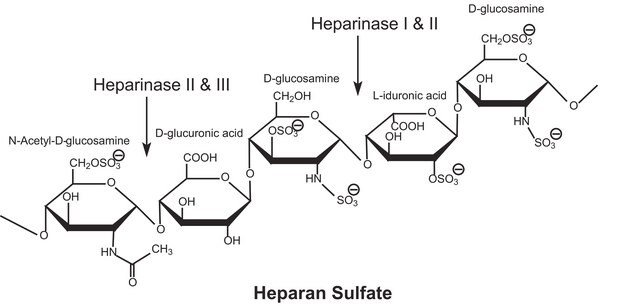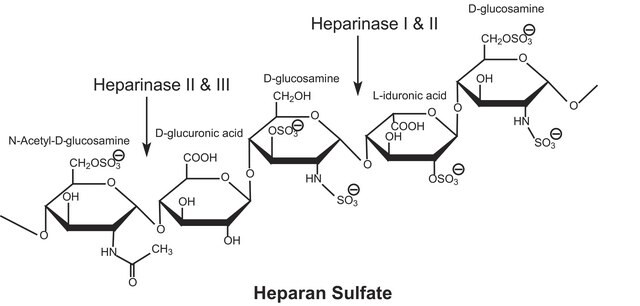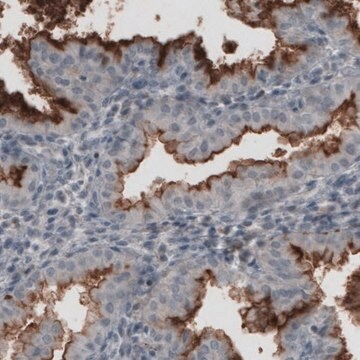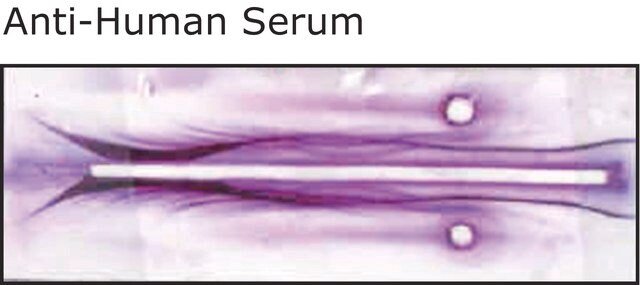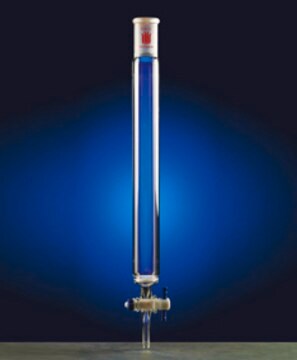MABF3083
Anti-SARS-CoV-2 Delta Spike Antibody, P681R Antibody, clone 4C5-B2
Sinónimos:
S glycoprotein Delta P681R, Spike glycoprotein Delta P681R
About This Item
Productos recomendados
origen biológico
mouse
Nivel de calidad
forma del anticuerpo
purified antibody
tipo de anticuerpo
primary antibodies
clon
4C5-B2, monoclonal
mol peso
calculated mol wt 141.18 kDa
observed mol wt ~200 kDa
purificado por
using protein G
reactividad de especies
virus
envase
antibody small pack of 100 μL
técnicas
western blot: suitable
isotipo
IgG2aκ
secuencia del epítopo
Extracellular domain
Nº de acceso UniProt
temp. de almacenamiento
2-8°C
Información sobre el gen
vaccinia virus ... S(43740568)
Especificidad
Inmunógeno
Aplicación
Evaluated by Western Blotting in lysate from HEK293T cells transiently transfected with SARS-CoV-2 Delta spike B.1.617.2.
Western Blotting Analysis: A 1:500 dilution of this antibody detected SARS-CoV-2 Delta spike protein (P681R) in lysate from HEK293T cells transiently transfected with SARS-CoV-2 Delta spike B.1.617.2, but not in wild-type HEL293T cells.
Tested Applications
Western Blotting Analysis: A representative lot detected SARS-CoV-2 Delta spike protein (P681R) in Various whole cell lysates of HEK293T SARS-CoV-2 spike transfectants (Data courtesy of Dr. Stefan Schüchner and Dr. Egon Ogris (Max Perutz Labs, Medical University of Vienna, Austria).
Note: Actual optimal working dilutions must be determined by end user as specimens, and experimental conditions may vary with the end user.
Descripción de destino
Forma física
Reconstitución
Almacenamiento y estabilidad
Otras notas
Cláusula de descargo de responsabilidad
¿No encuentra el producto adecuado?
Pruebe nuestro Herramienta de selección de productos.
Código de clase de almacenamiento
12 - Non Combustible Liquids
Clase de riesgo para el agua (WGK)
WGK 1
Punto de inflamabilidad (°F)
Not applicable
Punto de inflamabilidad (°C)
Not applicable
Certificados de análisis (COA)
Busque Certificados de análisis (COA) introduciendo el número de lote del producto. Los números de lote se encuentran en la etiqueta del producto después de las palabras «Lot» o «Batch»
¿Ya tiene este producto?
Encuentre la documentación para los productos que ha comprado recientemente en la Biblioteca de documentos.
Nuestro equipo de científicos tiene experiencia en todas las áreas de investigación: Ciencias de la vida, Ciencia de los materiales, Síntesis química, Cromatografía, Analítica y muchas otras.
Póngase en contacto con el Servicio técnico